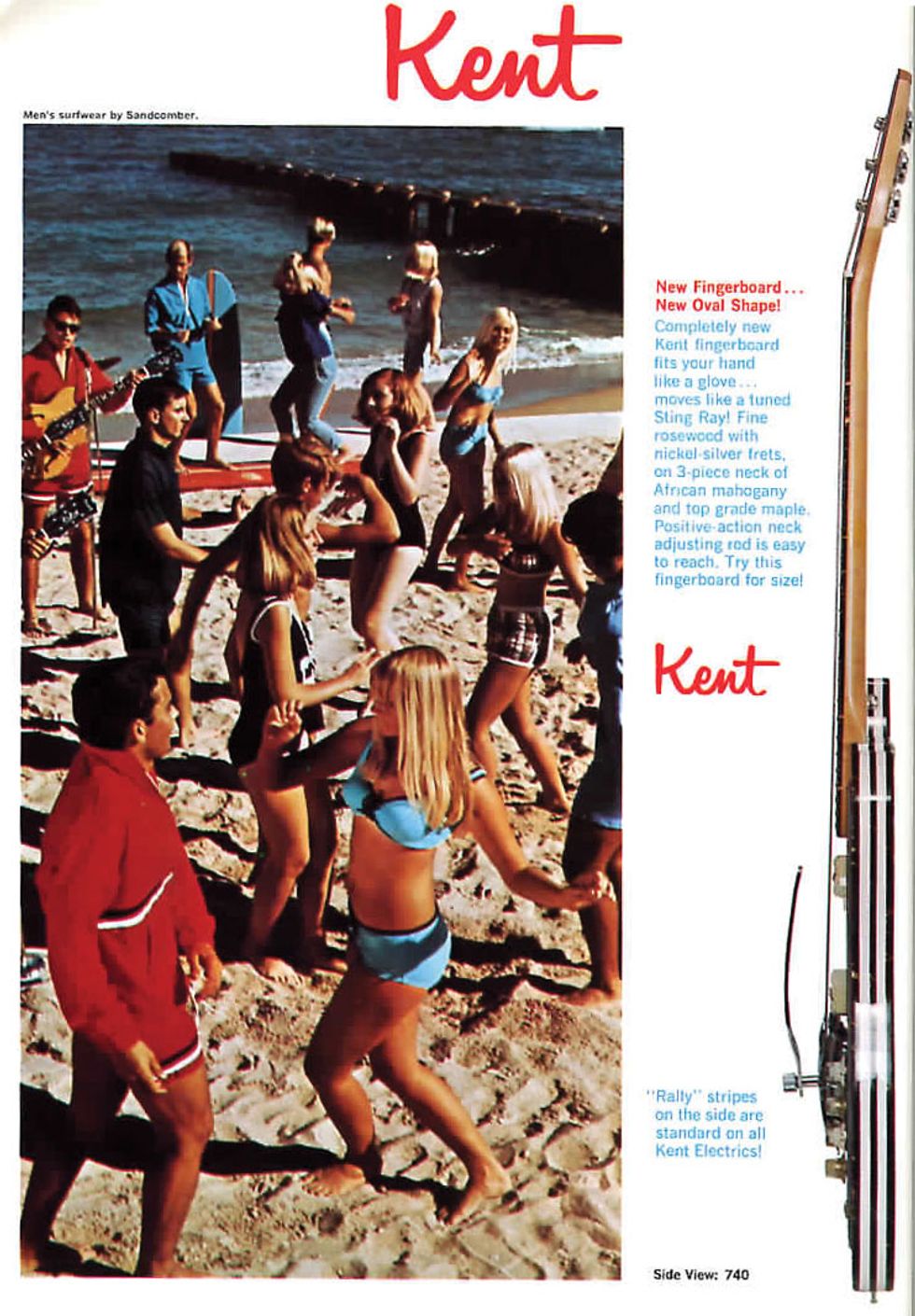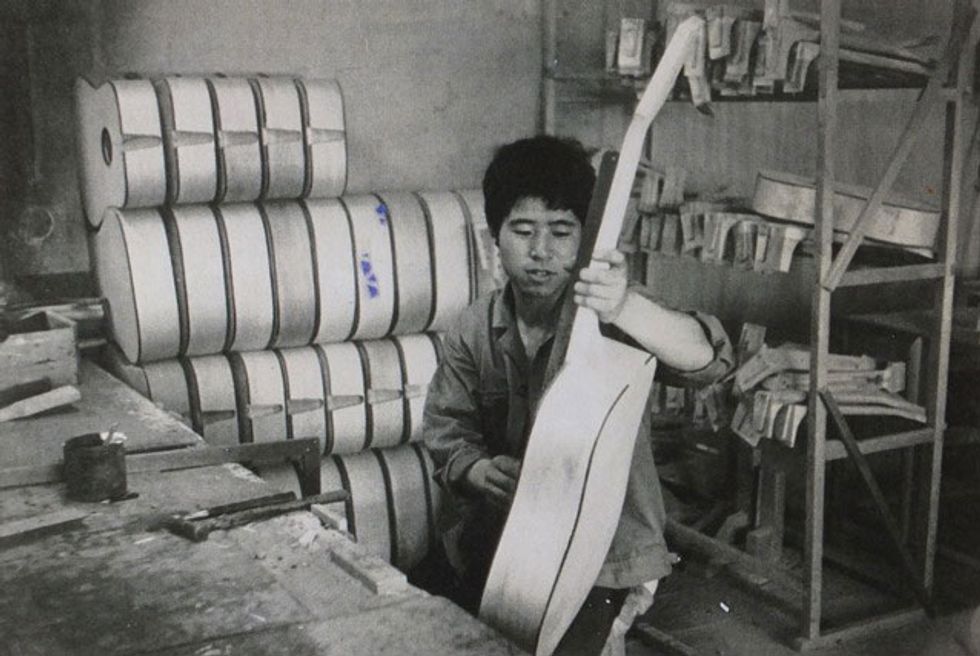Guitars, cars, motorcycles ... everything just looks cooler with rally stripes, right? If I ever start a guitar company, I’m going to put rally stripes on every model. Okay, you might wonder what’s driving this obsession, so let me explain.
Back in the ’90s, I became enthralled with a line of late-’60s Kent electrics that featured rally stripes all around the edges of their bodies. Built much better than typical vintage Japanese electrics, these Kents featured uniquely sculpted bodies, pearloid inlays, powerful pickups, and a totally original tremolo system that actually worked well.
These old guitars became known in my circle as “good Kents,” and I began to search them out. In my travels, I kept finding more interesting examples of these models with three and four pickups (Image 1)—and even genuine Bigsby-equipped Kents.
Some background: Kent Musical Products was a subsidiary of the much larger New York-based musical instrument distributor called Buegeleisen & Jacobson. From around 1964 to 1967, Kent guitars were primarily manufactured by Guyatone. Then in 1967, the crazy-cool “good Kents” appeared, though they faded out by 1969. So once again, as so often happened in the then-fledgling electric-guitar market, models came and went, only to be discovered much later by fans of the bizarre.
Image 2
Flipping through late-’60s Kent catalogs is a real trip because of the ubiquitous beach parties and hot rod-references in the text and photos (Image 2). But the guitars are the real story here. The designs are so interesting and original. There was much speculation about who dreamed up these Kent guitars. I had a few Japanese friends and researchers that had ideas, but no one could ever say for sure. But I wasn’t going to let it go: Each time I visited Japan I’d bring my book and the excellent Japanese 60s Bizarre Guitars and share the photos with some of the older folks. I was particularly interested in the solidbody 700 series, which were made so well and sounded great.
On one trip to Japan, fellow researcher Tadashi Ito suggested I visit the Deviser factory in Matsumoto. To be honest, I wasn’t keen on it because Deviser seemed to specialize in what I call “coffee-table guitars” made with fancy woods. But Tadashi urged me on because there was an older employee there, Yasuo Momose, who had originally worked at FujiGen in the 1960s and was still making guitars at Deviser. The factory was even using the name Momose on some of their high-end models.
Image 3
So I went to Deviser and politely toured the factory until I came upon Momose in his shop. Let me tell you, the guy was hustling. He was working on five different acoustic guitars and moving among them like he was on skates. Momose was very polite and stopped his manic pace to give us his full attention. Soon I was pulling out my books to show him old photos. When I came across the “good Kent” section, he started to tear up. Those Kents with the rally stripes? They were his very first guitar designs.
Momose explained he left FujiGen in 1965 and went to work for a smaller guitar factory in Matsumoto called Hayashi Mokko. He was in his early 20s and was soon tasked with designing an entirely new guitar line. These Kents are the guitars he conceived, and the rally stripes weren’t placed there to be ultra-cool. They simply covered the lamination seams of his body design. I learned all sorts of useful information about the old days, but for now, let’s raise a glass in honor of Yasuo Momose (shown in Image 3 working at FujiGen, circa 1964) and his hot-rod guitars!
Watch the video demo:














![Rig Rundown: Russian Circles’ Mike Sullivan [2025]](https://www.premierguitar.com/media-library/youtube.jpg?id=62303631&width=1245&height=700&quality=70&coordinates=0%2C0%2C0%2C0)






